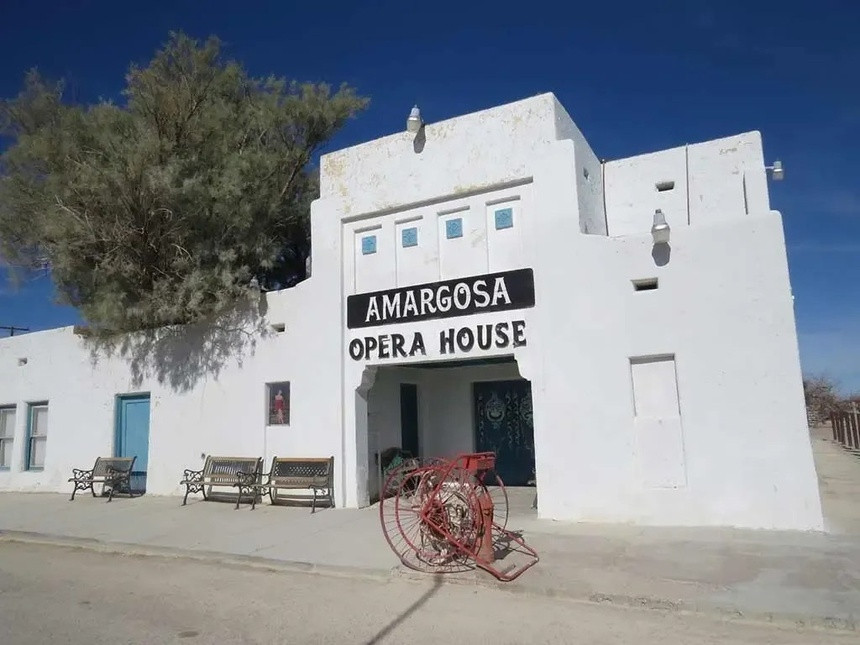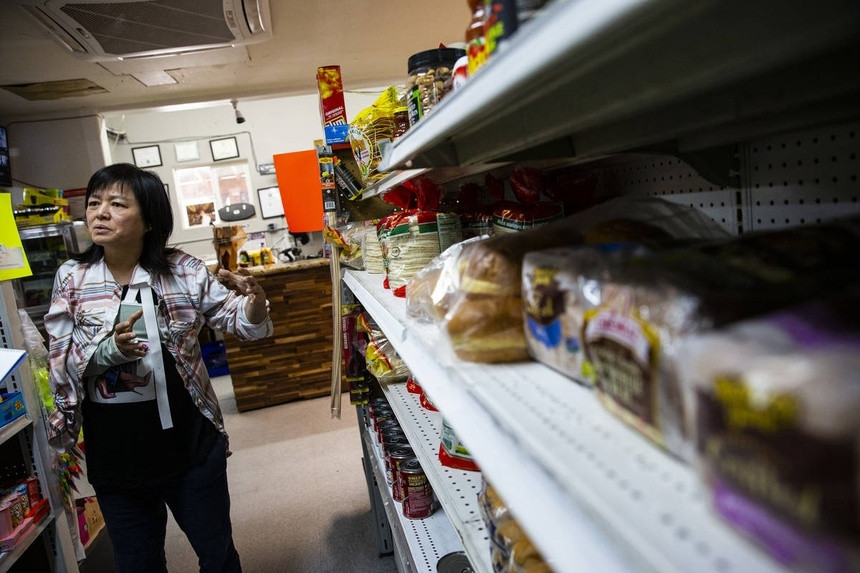The heat in Death Valley (located between the states of California and Nevada, USA) is so intense that it is almost unbearable. Living and working here is not easy.
Jenni Williams took a thermometer photo of Death Valley - the hottest place on earth. The temperature was recorded at 57.2 degrees Celsius. Her camera broke.
“Everything breaks in the hottest place on Earth,” said Brooke Grey, manager of the Amargosa Opera House Hotel, one of the few permanent residents. Plumbing, roofs, cameras—all strain to withstand the intense heat that has blanketed the small desert town.
Unbearable heat
Summers in Death Valley are always brutal, but this July broke all previous records. On July 9, it was hot enough to rare a steak.
Tourists pose next to thermometers at the tourist information centre in bikinis and T-shirts, their skin flushed and sweaty. The electronic board shows a temperature of 57.2 degrees Celsius, but park staff later announce that the actual temperature is around 54 degrees Celsius.
The highest temperature ever recorded in Death Valley was 56.6 degrees in 1913, but the accuracy of that figure is still debated among scientists. Some believe that the most recent 54.4 degrees recorded in August may be the modern record.
|
Temperatures in Death Valley in June reach 54 degrees Celsius. Photo: Getty Images |
Visitors from across Europe and Asia come here to hike the park, a journey that can sometimes be a torture. In late July, a 68-year-old man died during a 19km trek through the Death Valley salt flats.
Not many people can stand that kind of weather, let alone make a living here.
“The current population of Death Valley Junction is 2.7,” Fred Conboy, general manager of the Amargosa Opera House hotel, told Insider in an email, noting that the hotel’s cat Wilsoncat counts as 0.7 people.
"Right now, there are more wild horses coming here from the desert than tourists coming to the hotel. We give them hay and water to survive," said Convoy.
Grey's house is in danger of being flooded in a rare rainstorm in the desert. July is the rainy season in Death Valley.
“I think a lot about climate change living here,” says Grey. “One, the heat is getting unbearable. Two, when it rains, we think Death Valley might be underwater, like it used to be.”
When the pandemic kept visitors away from Death Valley National Park, the Amargosa Hotel and Theater was forced to close. Open since 1967, the venue had staged New York ballet dancer Marta Becket, often without an audience.
Decades later, the place is still deserted, but a young woman sits behind the reception desk. “I’m the last woman,” says Grey. “A lot of the staff have been laid off during the pandemic.”
 |
Amargosa is no longer visited by visitors. Photo: Moon Travel Guides |
The future is bleak
Martell Supermarket is located in the middle of nowhere, but has been operating steadily for 12 years under the management of retired couple - Ed and Sunny Martell. This store sells everything and has received countless 5-star reviews online.
One person said Martell saved her life after her car got stuck in quicksand. She called two towing companies, but they said they couldn’t get to her and told her to call Martell’s supermarket, which provides everything from Vietnamese food to Wilsoncat grooming services to rescue.
The heat of Death Valley doesn’t worry Ed as much as the loss of customers. Running a supermarket is expensive, especially the electricity bill for air conditioning. They had to close for months during the pandemic.
 |
Sunny Martell in her small grocery store in the hottest place on earth. Photo: Las Vegas Journal |
Grey said her hotel only took in $1,000 in August.4,000 USD, while operating costs in July amounted to10,000 USDHotel theaters and cafes used to bring in extra cash if bookings were low. But now they don’t have the staff to reopen.
"I never thought I would have to close the hotel because there were no guests. And that's what I'm doing, many days we have no guests."
Carniceria La Piedad, a butcher shop about 30 minutes from Death Valley Junction, is run by Josephine Lucro and her two children. Lucro immigrated to Las Vegas and opened Death Valley’s first Mexican-owned meat market in 2005. The store has remained open during the pandemic as an essential service—one of the few grocery stores in the area.
Parra said the key to doing business in Death Valley is not going out unless necessary, and staying hydrated. "The heat here is no joke," he said.
Grey says living in the hottest place on earth is both a blessing and a curse. “It’s great to be isolated and a treasure trove for visitors to explore. But if it were in a more populated area, more people would be coming to the hotel.”
According to Zingnews